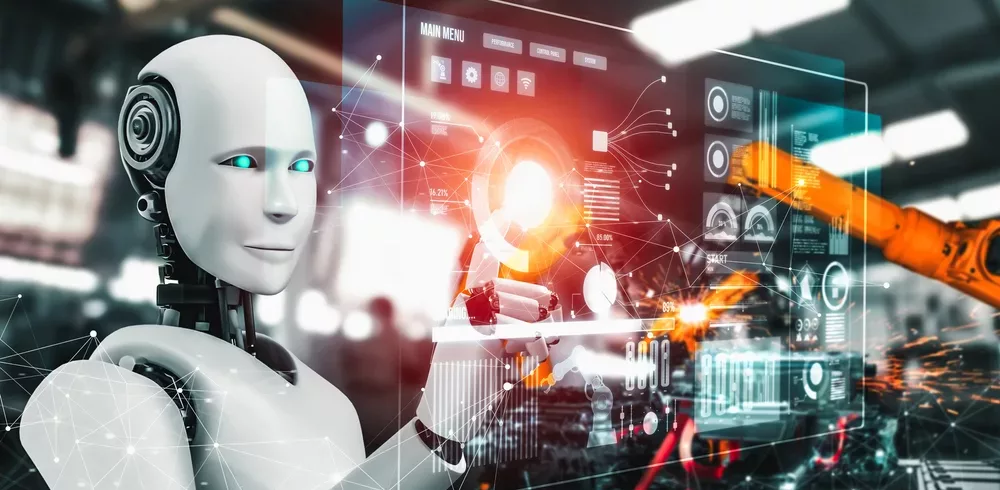As we venture further into the 21st century, there’s no denying that two powerhouses – AI and manufacturing – are coming together, heralding a significant shift in our industrial landscape. This blend of cognitive computing with industrial output is set to usher in an age of unparalleled efficiency, customisation, and innovation. Let’s explore what the future holds for AI and manufacturing in this context.
1. Predictive Maintenance Takes Centre Stage
The days when factory machinery unexpectedly shut down, causing losses in production, are on their way out. AI-driven predictive maintenance tools scrutinise machine data in real-time, identifying patterns indicative of forthcoming breakdowns. By catching these anomalies early, companies can minimise downtime, ensure seamless production, and significantly prolong their equipment’s lifespan.
2. Superior Quality Control
Quality assurance has always been pivotal in manufacturing. However, the variable of human error remains. AI and manufacturing join forces to change that. Advanced vision systems, powered by AI algorithms, can inspect products with microscopic precision, identifying defects that might escape the human eye. These systems, operating tirelessly, guarantee consistent product quality while redirecting human workers to more strategic functions.
3. Supply Chain and Stock Optimisation
The intricacies of supply chains have long posed challenges for manufacturers. With AI and manufacturing collaborating, companies can now forecast demand with greater accuracy, fine-tune stock levels, and even foresee potential supply chain disruptions. The result? Streamlined operations, reduced wastage, and enhanced customer satisfaction due to punctual deliveries.
4. Collaborative Robots (Cobots)
Robots in manufacturing aren’t a new concept, but their evolution via AI is truly revolutionary. Cobots are designed to work alongside humans, assisting in tasks whilst learning and adapting on-the-fly. Unlike their traditional counterparts, cobots can be effortlessly reprogrammed for a range of tasks, making them invaluable in flexible manufacturing settings.
5. Customisation on a Grand Scale
One of the most thrilling prospects of AI and manufacturing is the capability to produce tailored products at scale. Leveraging AI algorithms that swiftly adjust production parameters based on individual customer preferences, manufacturers can craft bespoke products without compromising the efficiencies of mass production.
6. Sustainable Manufacturing
Given the rising concerns over climate change and dwindling resources, sustainable manufacturing practices are increasingly vital. AI plays a pivotal role here. By analysing vast data from diverse processes, AI can suggest optimisation strategies that curtail energy usage, diminish waste, and make the most of available resources.
7. Worker Safety and Ergonomics
Safety within the manufacturing sector is paramount. AI-infused wearables and monitoring systems can assess worker movements, ensuring ergonomic postures are maintained and potentially hazardous areas are avoided. These real-time alerts can prevent injuries, fostering a proactive safety culture.
8. Ongoing Learning and Skill Development
The rapid incorporation of AI in manufacturing demands constant skill development for workers. AI and manufacturing come together once again to facilitate this. Virtual reality (VR) paired with AI offers realistic training simulations, allowing workers to acquire and hone new skills in a risk-free environment.
9. Data-Driven Decision Making
Manufacturers produce a staggering amount of data daily. AI systems can sift through this, drawing out insightful patterns and trends. This empowers management to make well-informed decisions, be it in product development, market exploration, or operational refinements.
10. Bridging the Gap Between Design and Production
Historically, there’s always been a chasm between product design and its real-world production. AI-driven simulations enable designers to envisage the production process, spot potential challenges, and adjust designs accordingly. This seamless integration paves the way for fewer production snags and greater innovation.
Closing Thoughts
Whilst the potential of AI and manufacturing seems limitless, its adoption does come with challenges. Concerns surrounding job displacements, data privacy, and reskilling are genuine and must be addressed head-on. Yet, history reassures us that with every industrial revolution, while some jobs wane, many new roles emerge.
Standing at this new crossroads, it’s crucial to embrace change, commit to ongoing learning, and address challenges proactively. Collaboration among tech developers, policymakers, educational institutions, and manufacturing leaders will be instrumental in ensuring a smooth transition and capitalising on this transformative era.
Manufacturing & Engineering Magazine | The Home of Manufacturing Industry News













